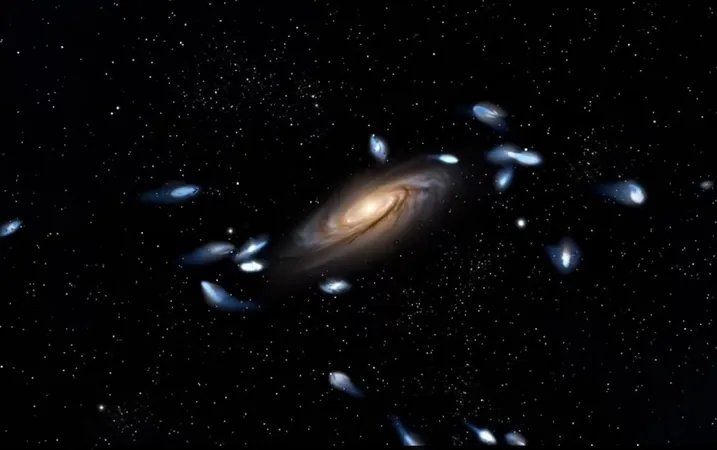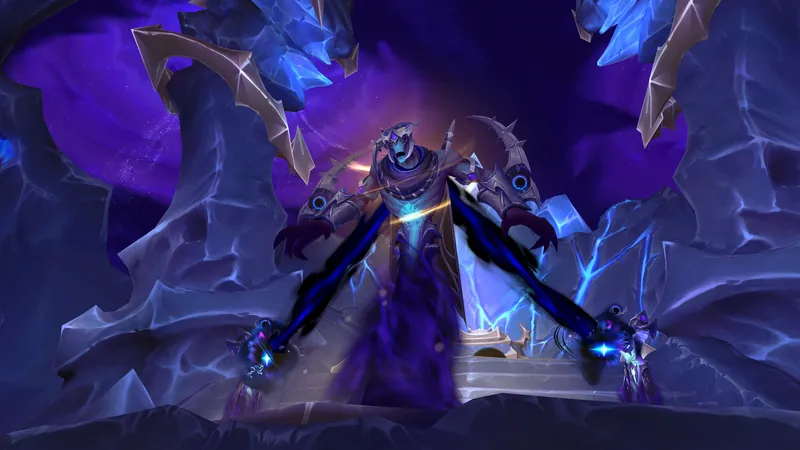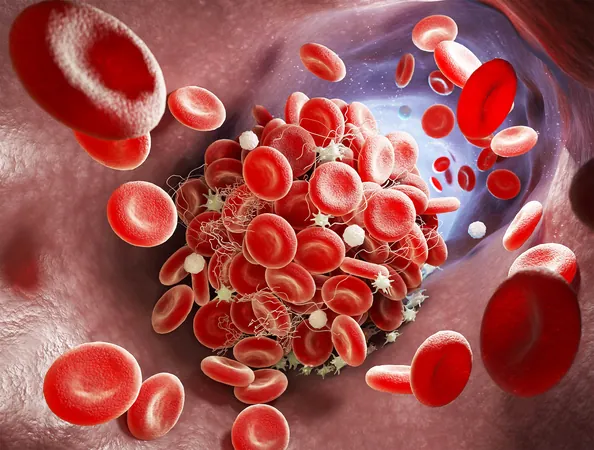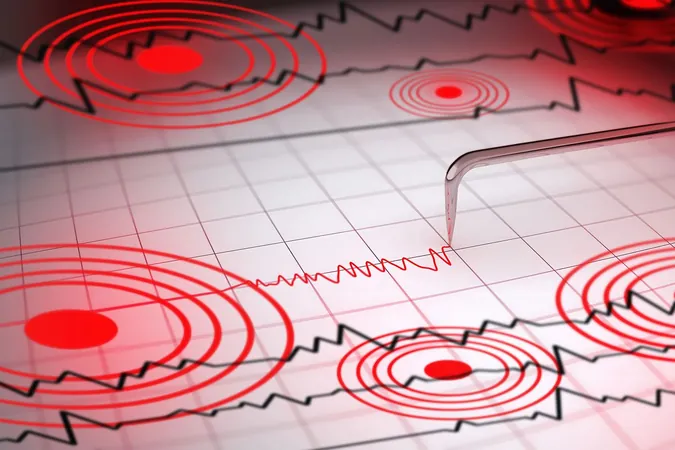
Galactic Dance: What Happens When Dwarfs Merge?
2025-08-13
Author: Sophie
The Cosmic Collision: Milky Way and Andromeda
Astronomers are buzzing with excitement over the impending collision of the Milky Way and Andromeda galaxies, which is set to unfold in the next few billion years. But what will this spectacular event look like? Researchers are keen to discover how the dynamics of smaller dwarf galaxies can provide insight into this monumental merger.
Advanced Simulations Meet Real-World Studies
While advanced simulations are a go-to method for studying galactic mergers, a team from Australia’s University of Queensland is taking a different route. They are analyzing a pair of galaxies, NGC 5713 and NGC 5719, that are already engaged in a cosmic dance, offering valuable clues about what’s to come for our own galactic duo.
Dancing Galaxies: A Closer Look
In a paper published in the 'Monthly Notices of the Royal Astronomical Society,' lead author Helmut Jerjen describes how these two spiral galaxies, located about 300,000 light-years apart, interact in ways reminiscent of a ballet. Their motions, influenced by a tidal bridge of neutral hydrogen stretching over 650,000 light-years, reveal gravitational interplay and enhanced star formation.
Unveiling Stellar Streams and Satellite Galaxies
The study showcases intricate structures surrounding the galaxies, including prominent stellar streams and 14 confirmed dwarf satellite galaxies. These dwarfs—clumped into two distinct groups—reveal a coherent pattern of movement that offers crucial insights into the gravitational history and dark matter distribution of the galaxies.
Glimpses into the Future: Milky Way's Fate?
Dr. Sarah Sweet, key in the 'Delegate' survey aimed at understanding dwarf galaxies, asserts that studying NGC 5713 and NGC 5719 allows scientists to peer three billion years into the future—providing a glimpse of how the Milky Way and Andromeda might merge. As Dr. Sweet notes, understanding these interactions is key to deciphering how our own galaxies will collide.
Can We Predict Our Cosmic Fate?
The researchers are determined to classify whether the Milky Way/Andromeda pair is a common example or an outlier in the universe. Their findings could redefine our understanding of galaxy evolution, helping bridge the gap between theoretical models and observational data.
The Importance of Future Research
Observations indicate ongoing tensions between local galaxy studies and advanced cosmological simulations, prompting calls for refinement in existing models. With new simulations revealing analogues to NGC 5713/19, the path is clear for future analyses to solidify these theories.
A Dance That Shapes the Cosmos
As NGC 5713 and NGC 5719 spiral together, their behavior hints at how the Milky Way may soon 'dance' with Andromeda and its surrounding dwarf galaxies. The quest continues for answers about our galactic future, raising the tantalizing question: What will this cosmic waltz look like in billions of years? Stay tuned!









 Brasil (PT)
Brasil (PT)
 Canada (EN)
Canada (EN)
 Chile (ES)
Chile (ES)
 Česko (CS)
Česko (CS)
 대한민국 (KO)
대한민국 (KO)
 España (ES)
España (ES)
 France (FR)
France (FR)
 Hong Kong (EN)
Hong Kong (EN)
 Italia (IT)
Italia (IT)
 日本 (JA)
日本 (JA)
 Magyarország (HU)
Magyarország (HU)
 Norge (NO)
Norge (NO)
 Polska (PL)
Polska (PL)
 Schweiz (DE)
Schweiz (DE)
 Singapore (EN)
Singapore (EN)
 Sverige (SV)
Sverige (SV)
 Suomi (FI)
Suomi (FI)
 Türkiye (TR)
Türkiye (TR)
 الإمارات العربية المتحدة (AR)
الإمارات العربية المتحدة (AR)